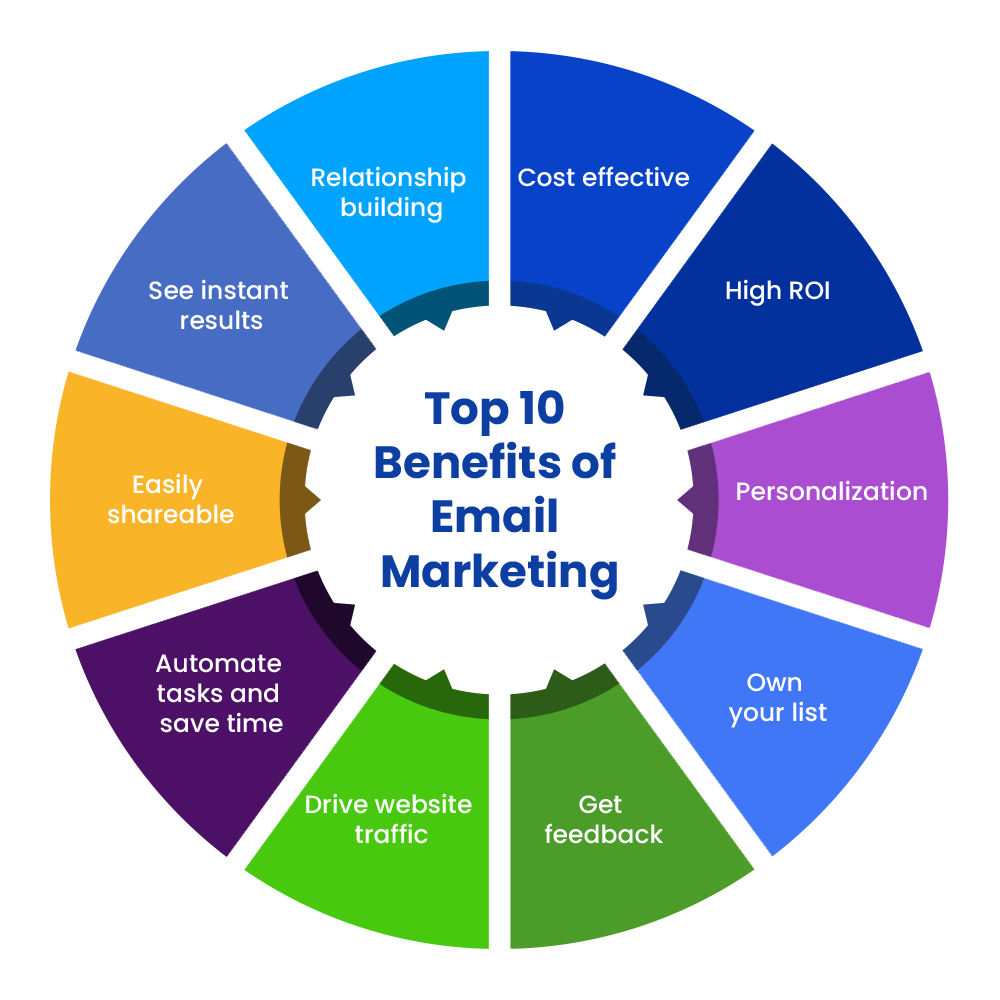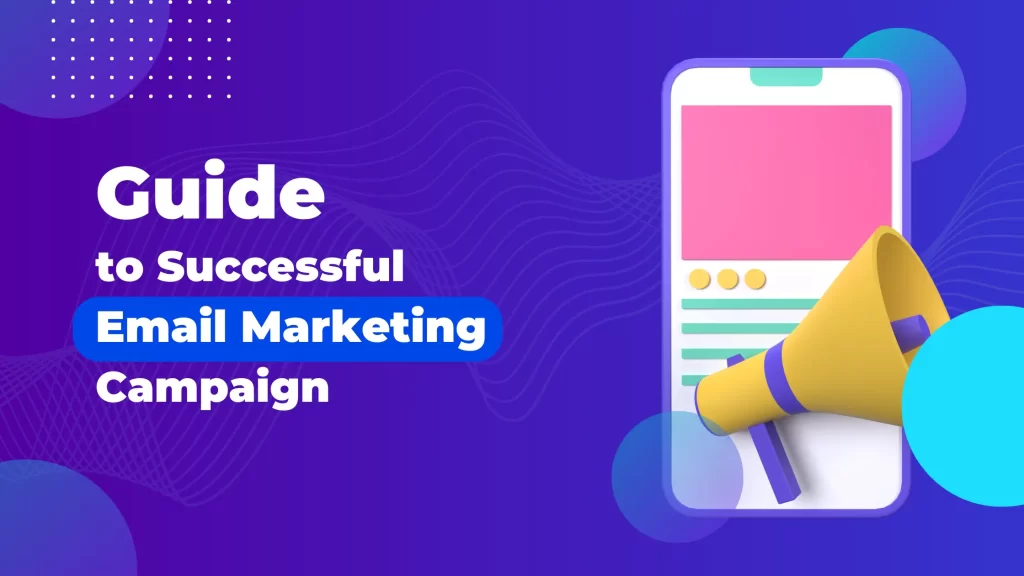Table of Contents
Introduction to email marketing campaign
In this you learn how to Leverage email marketing campaign success and how to boost your targeted audience reach. Nowadays, companies spend a hefty amount of capital on their marketing ventures. Grand openings, high-budget advertising campaigns, affiliate marketing, etc., usually end up drawing your company’s bank accounts.
Then what is the most foolproof way of reaching your audience while ensuring that you do not overspend?
Whether you own a small business or a well-established one, email marketing campaign is the most efficient way of reaching your audience. The very first marketing email was sent in the 1970s and brought in more than $10 million in sales! Such is the power of email marketing campaign when done right and it is used at such a large scale even today.
What is email marketing campaign?
Email Marketing is a marketing strategy that involves sending promotional content as well as newsletter campaigns to a group of people through email. These groups of people are generally the target audience that has the highest probability of engaging in the product or service. Through Email Marketing, businesses can employ strategies such as segmentation, personalization, automation, and analytics in order to customize their messages to a specific clientele and maintain a direct and personalized communication channel.
According to a 2019 email tracker report by DMA and Dotdigital , Email Marketing can result in an ROI of about $40 for every $1 spent. To reap the benefits of an Email Marketing Campaign, you should be aware and thorough on how to create a successful email Marketing campaign.
How to Create a Successful Email Marketing Campaign
Before you set out on your Email Marketing venture, there are a few things that you need to be very aware of. Taking the first big step should be planned out and meticulous.
Here is what you need to know when creating a successful Email Marketing campaign.
Know your target audience:
You cannot keep sending emails to everyone who has an Email Id. When establishing a product or service, you need to know who that product/service is for and what prospects are best suited and likely to make the purchase. Once you know your target audience, you can have a better understanding of their pain points and expectations and send them emails and newsletters accordingly. Begin with your Buyer Persona- just like you ought with everything in marketing. Once that has been established, identify their requirements and preferences, and customize your emails accordingly.
Build a High-Quality Email complying with Email Regulations:
Once again, you cannot keep sending emails to everyone. Now that you have a set target audience, you can go ahead and create an email list. Users who have granted you consent to send them emails regarding relevant information make up an email list. You need a number of options for potential customers to choose to receive your emails in order to create that list. In the meantime, keep an eye on how many people have subscribed to you organically and try to increase that number as well.
In order to maximize this process, you must first ensure that your subscribers truly open and read the emails they receive from you. In case your email open rates are low, it is likely that the emails that you are sending to your prospects are going directly to their spam folder.
Here are some things that you should keep in mind if your emails end up in the spam folder:
- Refrain from buying email lists
- Ensure to seek proper consent to send emails
- Verify your email list thoroughly
- Ensure that the content of your email is relevant and precise
- Undergo multiple spam tests
Other than this, you must also ensure to follow Email regulations accordingly.
The CAN-SPAM Act is a law of regulations for commercial emails which allows receivers the option to stop receiving emails from you and outlines severe consequences for noncompliance.
Listed below are its major requirements:
- Avoid using false or misleading headers or subject lines
- Let the recipients of your email know where you are located at
- Give the recipients a clear-cut option to opt out of receiving emails from you and follow them respectfully
Create Effective Email Content:
Now that you are aware of your audience and have created lists accordingly, it is time for you to start creating and structuring your content. Keep this question in mind- What message do you want to convey to your audience?
Always keep in mind why your subscribers signed up for your emails so that you can send them with purpose and in a way that resonates with them. Make sure you’re providing your readers with fresh and practical information that is to the point and easy to understand.
Schedule it, then Measure it:
Once you have decided what content you will be adding to your emails, determine your intended frequency of contacting the people on your list, and let your audience know well in advance. Additionally, once you’ve established a routine, be consistent. It will increase your audience’s level of confidence in you and make sure they remember you.
In the marketing industry, everything is measured. You can make minor adjustments to your emails that you may think will have a big impact if you are precise about every important parameter.
Major Types of Email Marketing Campaigns
A detailed and thorough approach is very important when embarking on an email marketing campaign. This is due to the fact that a single form of email may not yield proper results. You may utilize email in various ways to maximize the effectiveness of your plan.
Here are a few types of email marketing campaigns that have been proven to be successful:
Newsletters
Newsletters are the most popular when it comes to Email marketing. Brands may use them to provide industry news and updates, features, blogs, and more to their subscribers as they are usually non-promotional in nature. Usually, newsletters are distributed on a weekly, biweekly, or monthly basis. They are excellent resources for helping you develop enduring bonds of trust with your prospects.
To understand how to write effective Emails and choose the right email Newsletter Templates, check out our Email Newsletter Guide.
Promotional Emails
A promotional email may come in multiple forms, but its main objective is to advertise to your audience about a particular product, service, or continuing campaign. It can talk about the new products or services added to your brand, an ongoing sale, a sale that is going to start or end soon, etc.
Seasonal Emails
Seasonal emails are sent during specific holidays or seasons. They are ideal for advertising products and services that are seasonally appropriate. For instance, some brands may opt for email campaigns highlighting their seasonal sales (Summer sales, winter hauls, etc) or even send emails on specific holidays, providing offers accordingly (Christmas offers, 4th of July discounts).
By highlighting products or services that are relevant to the season, brands usually see an increase in sales. Some other types may include:
- Welcome Emails
- Cart-related Emails
- Engagement/re-engagement Emails
- Post-purchase Emails (Order Tracking, invoice, follow-ups, and order confirmation emails)
- Post-purchase Emails (Order Tracking, invoice, follow-ups, and order confirmation emails)
- Feedback/review Emails
Benefits of Email Marketing

Email marketing has the potential to be a very effective marketing strategy for your brand. While there are various benefits to an email marketing strategy, we have highlighted a few important ones that you should highly consider.
Increase in Brand Awareness:
By providing your subscribers with useful information, instructional material, news, updates, and more, Email Marketing may aid in the promotion of your company, and your products and services. To increase awareness of your brand, you should also match the appearance and content of your emails to your company’s brand.
Increase in Sales and ROI:
Email may help you advertise your products and services to clients and test out various advertising strategies to increase sales. This can be done by offering discounts, coupons, etc. This will also assist in increasing the ROI of the company.
Keeping consumers engaged:
With Email Marketing Campaigns, you can experiment with the messages and newsletter templates. There is a plethora of ideas that you can test out via campaigns and note down what works best for you. Mixing up your campaigns helps in keeping your audience engaged and maintain enthusiasm for your brand.
Score Beneficial Data:
Email Marketing helps to collect and analyze consumer data and also their purchasing behavior. To achieve this, you may send email questionnaires and feedback forms, as well as track statistics and email analytics. You can leverage this data and improve your email content, templates, offers, etc.
Conclusion
Email Marketing need not be complicated. For marketers who are willing to understand how to do it properly, Email Marketing offers enormous benefits. There is no secret to this strategy, all you need to make sure is to understand what works best for your brand and audience and deliver consistently.





